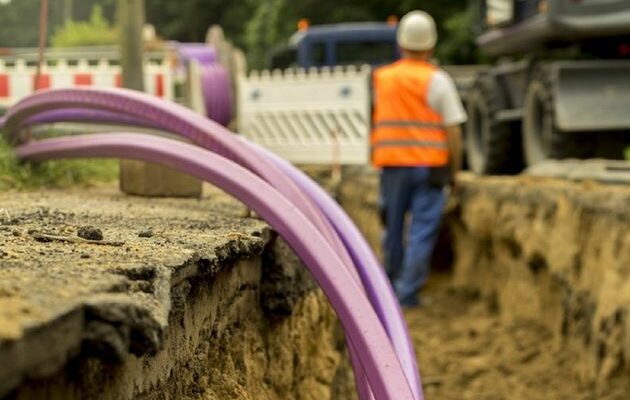Clearly, the increase in access prices to Orange’s infrastructure is not happening. To bring fiber to their subscribers’ homes, operators use civil engineering infrastructure – underground pipes, aerial supports – built by Orange in the 1970s to deploy its copper network supporting fixed telephony and ADSL technology.
However, from March 1, operators will pay on average around 70% more for the passage of their optical fiber lines in the ducts or on the surface poles of the historic operator. In 2025, this right of access will increase further from 22% to 28%. That’s a doubling of prices in one year.
Distortion of the telecoms market in France
Celeste calculated the additional cost at 3 million euros. For this BtoB cloud and fiber operator, this surge in access prices could translate into “ increases in optical fiber costs for individuals and businesses, and a reduction in competition to the benefit of Orange. »
At the end of September, the European Commission pleaded with Arcep, the French telecoms watchdog, to “ a gradual introduction of new tariffs over the coming years”.
“The application of Arcep’s decisions, allowing Orange to double access prices to its ducts and poles, in such an abrupt manner risks leading to a distortion of the telecoms market in France”, judge Nicolas Aubé, founding president of Celeste. To his eyes, “ the principle of free and undistorted competition is compromised by the regulator’s measures favoring the historic operator. »
A halt to the generalization of fiber?
Furthermore, the increase in prices could, according to him, “ slow down the dynamic aimed at encouraging as many companies as possible to adopt fiber » Companies currently connected to ADSL would be reluctant to migrate to fiber in the absence of large-scale communication on the timetable for closing the copper network.
Since January 31, 2024, the shutdown of the copper network, which will gradually extend to the entire territory until 2030, has officially begun. The first phase of dismantling affected 162 municipalities and around 40,000 companies which can no longer subscribe to new xDSL subscriptions.
Faced with this observation, Celeste contacted the Council of State. In its requests filed on February 14, the operator requests the annulment of the decisions taken by the regulator. In focus, the decision of December 14, 2017 which defines the economic conditions of access to Orange’s local loop civil engineering infrastructure as well as the tariff change made from this year.
Orange’s dominance in the business market strengthened
Celeste is not the only telecoms player to lead the charge. Another operator for professionals and communities, Netalis has filed a voluntary appeal against Arcep, according to The Informed.
For its part, the Association of Alternative Telecom Operators (Aota), which brings together around forty companies including Adenis, Blueinfra, ComMeeTT, Haxanet and Netensia, sent a letter to Arcep in mid-December.
Taking up Celeste’s arguments, she judges that the rapid increase in Orange’s wholesale prices ” risks significantly degrading the profitability of offers marketed by alternative operators aimed at customers, businesses and communities, not yet connected to optical fiber. Not only will it provide Orange with an illegitimate income, but it also risks strengthening Orange’s dominant position on the business market. »
The return of public control
To put an end to this monopolistic situation, Aota proposes “ the creation of a structure, on a national or local scale, whose purpose is to rent, maintain and develop at a rate reflecting the costs a public civil engineering network used by all operators operating on optical fiber, whether they are general public or businesses. »
The association also advocates “ return of public control of a strategic asset for the nation”. This would involve supporting the entity operating this strategic asset with a leading economic operator, armed arm of the State such as Caisse des Dépôts. This allows us to offer security and price stability over the long term.
Aota recalls that this type of arrangement exists on almost all networks of daily life such as those dedicated to energy or water but not in telecoms with the exception of very localized initiatives including a few networks. in the east of France.
